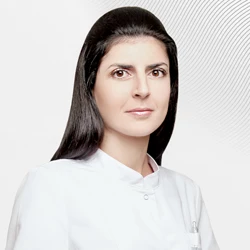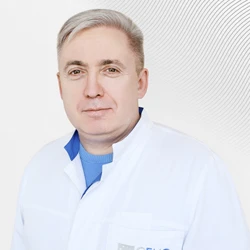First, you need to set the stage of the process.
Stage division is an expression used to describe various studies, usually performed after a diagnosis of advanced cancer, to determine whether the disease is still localized or has already spread to other areas of the body. For example, an operation to extract several axillary lymph nodes is performed to determine the stage of cancer.
When it comes to breast cancer, stage division is performed to determine the stage of the cancer. The main goal of the doctor in this situation is to remove the cancer while it still remains within the breast (if another tumor is found in the other breast, it is usually a "new primary cancer" and not a metastasis of the first one). If it is already known that cancer is present in other parts of the body, removing the breast is of limited importance, unless it is painful, infected, or ulcerated. The need to establish the stage if advanced cancer is detected is another reason to separate diagnosis from treatment: in order not to operate more than necessary.
Prognosis indicators or "markers" of relapse risk
In most cases, suspicious symptoms are caused by benign growths. But one or two out of every ten biopsies result in a cancer diagnosis. After that, information will be required from the sample to make a decision on immediate primary treatment or, if necessary, subsequent auxiliary treatment, complementing the main thing, about surgery. The information comes from "markers," or prognostic indicators of the risk of a return of the primary cancer that has been removed.You should be aware of the "markers" before diagnostic breast biopsy, even if it shows that the lump is a cancerous tumor.
Hormone receptor analysis
One of the most important laboratory tests is the estrogen receptor (OE) test. Determining the number of receptors for the female hormone estrogen in tumor cells is an indirect way to determine whether a cancerous tumor depends on this hormone during its growth. In this case, another indicator is usually determined - the progesterone receptor (RP).
If the majority of cells contain many receptors, the tumor is called RE-rich, or RE-positive. A tumor whose cells contain few receptors is RE-poor, or RE-negative. All breast cancers contain a certain number of cells with estrogen receptors, and the question is how many estrogen receptors are contained in a given volume of cellular material. If progesterone receptors are also present, their number is important for predicting the body's response to hormone therapy.
Other markers of relapse risk
Definitions of estrogen and progesterone receptors have become routine tests. One of them, the S-phase fraction, may be useful in predicting cancer aggressiveness. This indicator literally means the proportion of cells that are in the "synthetic" stage of the division process into daughter cells. A high proportion of the S-phase indicates that the cells are actively dividing, and the tumor is growing rapidly.
Another indicator is ploidy, which describes how cancerous the tumor cells are compared to healthy breast cells. By studying this, experts can assess how far the cancer cells have deviated from normal breast cells and, accordingly, how aggressive the tumor can be.
The proportion of S-phase and ploidy, along with the condition of the axillary nodes, tumor size, histological type, and the content of estrogen and progesterone receptors, can contribute to the marker picture, which helps oncologists recommend, if necessary, auxiliary therapy or other treatment after primary surgery.
Oncogene amplification, determination of the presence of the HER-2 oncogene, is an example of another study conducted to determine the number of copies of a certain abnormal gene in a tumor cell. This method is actively used, and the data accumulated about it and other new markers is convincing enough to recommend these analyses as standard.
Breast Cancer Treatment Options
If a diagnosis is made breast cancer, first of all, the breast where the tumor is found should be treated. The next task is to determine whether and, if necessary, how to treat the entire body if there is a strong suspicion that cancer may have spread beyond the breast.
Surgery, regardless of whether it is followed by radiotherapy, is the primary local treatment. Supportive care measures are carried out in addition to primary therapy in order to destroy cancer cells remaining in the breast or in remote areas of the woman's body. This is the purpose of chemotherapy and hormone therapy.
Decision-making begins with whether the breast can be preserved or whether it is safer to remove all breast tissue by mastectomy. Then, if it is decided to keep it, whether to do further irradiation. The next problem is whether auxiliary therapy is needed and which one will be most effective. The recommendations given by the surgeon are based on the results of many years of research on treatment options used by thousands of doctors in carefully controlled clinical trials.
Primary treatment
The primary treatment will consist either in one or another variant of mastectomy (removal of the breast), or in a partial operation to remove only the tumor (excision of the seal). After excision of the seal, irradiation of the preserved breast with a high dose of ionizing radiation is usually used.
Cancer cells can develop either from cells lining ducts (ductal cancer) or in lobules (lobule cancer)
.
Cancer of the ducts
Ductal carcinoma in situ (DCIS). These cancer cells develop from ductal tissue and remain in the ducts. This type of cancer, previously considered rare, is estimated to account for between 15 and 25% of all newly diagnosed breast cancers. If cancer is detected at this stage, the chances of a cure are very high.
Lobule cancer
Lobule carcinoma in situ. It is estimated that only 30-50% of women with this type of cancer will develop true invasive breast cancer within the next 10 years.
Invasive breast lobule cancer
This cancer can metastasize and spread throughout the body. The treatment is the same as for invasive ductal cancer.
The forty percent recurrence rate of local cancer supports the claim that breast cancer is a multicentric disease. In other words, women who have developed one breast tumor are more likely to have other cancers. When breast-preserving surgery is performed, the likelihood of recurrence is a reason for immediate final radiation treatment in order to eradicate the remaining cancer foci in the breast.
New advances in breast cancer treatment
Auxiliary therapy options:
Chemotherapy uses cytotoxic (cell-killing) drugs, usually in certain combinations.
Hormone therapy can help women whose cancer growth depends on the concentration of estrogens.
Breast reconstruction after mastectomy
Plastic surgery that creates an artificial breast bulge if the real breast is removed after cancer surgery is called "reconstructive mammoplasty". Special implants have also been developed, which have led to the artificial breast becoming closer to the real one in shape and elasticity.
Was this information helpful?
Questions and answers
Ask a Question
Get a consultation
Timely consultation to prevent negative consequences for your health
The leading European multidisciplinary clinic
We work at the level of the best international standards, introducing and developing advanced treatment methods
600
world-renowned
doctors
doctors
57
treatment
options
options
36
years taking care
of your health
of your health
24/7
we work
at any
convenient time
at any
convenient time
Subscribe to the newsletter
Find out before others about the special offers
and new products of the EMC
and new products of the EMC









.webp)

